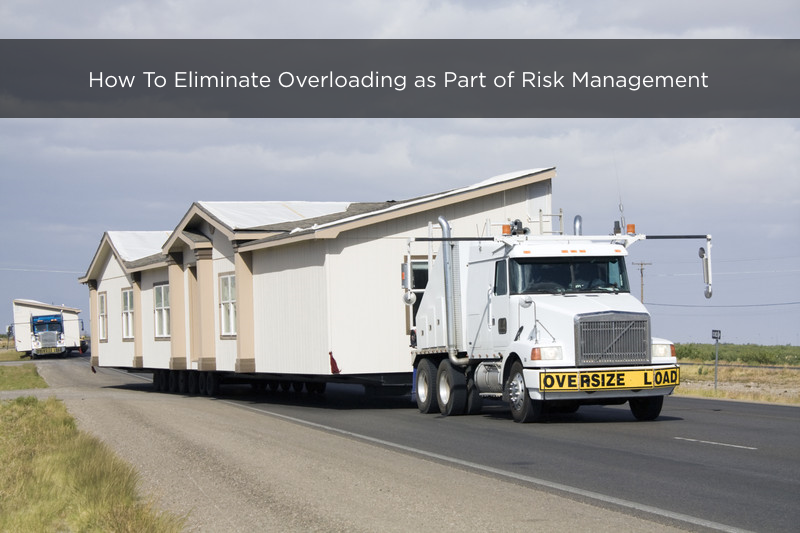Overloading. Eliminate as Part of Risk Management
Truck overloading puts a driver’s safety at risk. It’s against state and federal trucking regulations and can cost trucking companies thousands of dollars a year. Proper loading is an important part of risk management for truckers and trucking companies.
Why is an overloaded truck so bad? Let’s look at three specific ways truck overloading can hurt a trucker’s bottom line, and how to prevent it.

Overloading Risks a Truck Driver’s Safety
An over- or improperly loaded truck is unbalanced and more likely to tip during turns or lane changes. Overloaded cargo shifts more easily which can create an imbalanced load.
Additionally, overloading a truck makes it harder for the driver to control the vehicle in an emergency situation. It becomes harder to stop and longer braking distances are needed.
Drafting, a technique many drivers use to improve fuel efficiency, becomes even more dangerous with an overloaded truck.
Overloading Increases Operation Costs
Truck drivers who are independent operators want their vehicles to last as long as possible. Smart truckers work hard to increase the time between unscheduled maintenance. An over-sized truck increases the wear-and-tear on critical engine parts.
It puts added strain on the following:
- Tires
- Suspension system
- Axles
- Brakes
- Overloading can also affect the engine, which must work harder to help the truck achieve satisfactory power and speed.
Additionally, an overloaded truck uses more fuel per mile, resulting in increased gas costs and reduced profits for the trucker or the trucking company.
An overweight truck may not make it past weigh-in checkpoints, costing the trucker and trucking company wasted time and money.
Overloading Increases Liability
Whether the truck driver is an independent operator or works for a truck company, overloading a truck can result in a negligence lawsuit if anything goes wrong. When a driver or trucking company looks at risk management procedures, they should consider ways to eliminate truck overloading.
Assessing Trucks for Overloading
Fortunately, it’s easy to tell if a truck is overloaded or overweight. First, the driver should perform a visual inspection, looking for:
- Low rear-end
- Uneven tire wear
- Suspension or steering problems
An inspection of the vehicle’s service records, additionally, will show if the truck is going through brakes or tires faster than it should.
Enjoy the Benefits
Properly loaded trucks save truckers time and money. It might pay to move toward a lighter class of vehicle with a similar payload or to eliminate unnecessary upgrades and modifications to the truck.
With this information in mind, truckers should make load limits an important part of their risk management process.


Give us your opinion!